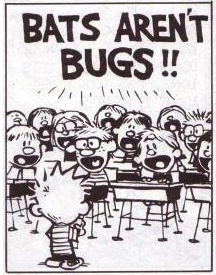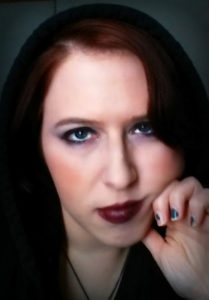“An eagle-eyed viewer might be able to see the wires. A pedant might be able to see the wires. But I think if you’re looking at the wires you’re ignoring the story. If you go to a puppet show you can see the wires. But it’s about the puppets, it’s not about the string. If you go to a Punch and Judy show and you’re only watching the wires, you’re a freak.”
— Dean Learner, Garth Marenghis Darkplace
…but I mean, there are times when research and accuracy aren’t the most important thing for reader immersion. The “Coconut Effect”, named after the horse-hooves sound the characters make in Monty Python and the Holy Grail by banging two coconut halves together, describes a phenomenon where readers have come to expect something so much, however unrealistic it may be, that not having it would break immersion.

Because there’s reality, and then there’s what the reader knows and understands of reality. Readers look for familiarity in common, repeated tropes that make up their repertoire from media they have consumed in the past, as opposed to actual science or facts. They come to expect these repeated in future media as its own language for the purpose of telling a story, all the while understanding that they are suspending disbelief in accuracy for the purpose of Plot or Rule of Cool. (Godspeed if you follow that link to TV Tropes.)
So maybe cars don’t actually explode into pyrotechnics when you shoot the gas tank (but it looks cool). Maybe radiation isn’t always glowing a sickly green (but it’s an easy way to show invisible radiation on a visual medium). Maybe it’s not so easy to get past security measures (thankfully so).
But readers come to expect these. We don’t actually ever anticipate a reader needing to blow up a gas tank with a well-placed rifle round or break past security. And that’s not touching the legal or ethical ramifications of essentially teaching someone how to carry out these acts.
It is important for you, the writer, to know the truth though, and insert it into your story as necessary. If your plot is based on something being true when it is not, the reader immersion may be so broken that the rest of the plot doesn’t make sense.
…There are exceptions for ad hoc cultural understandings based on the scientific data available at the time.

There are many ways to subvert this trope, and whether or not it’s appropriate to do so might depend on your story. Did your character learn some false information from watching too many movies or TV shows? For example, you might have a character who thinks they can blow up a gas tank with a rifle round, and when that doesn’t work out, what is their Plan B? Plot twist!
Are the characters arguing over whether or not they can actually “suck the venom out” of a snakebite? (The record, no, you can’t. Also it’s gross and unhygienic and you just introduced a lot of bacteria to a wound.)
Does your characters inaccurate knowledge lead them into trouble when everyone else calls them out on it?
 One place where it might be important to subvert or lamp-shade the trope the reader expects (regardless of how common it may be), is when perpetuating the myth might actively harm people and the cultural understanding of the people affected by the trope.
One place where it might be important to subvert or lamp-shade the trope the reader expects (regardless of how common it may be), is when perpetuating the myth might actively harm people and the cultural understanding of the people affected by the trope.
For example, writing stereotypical characters may perpetuate some of the prejudice and stigma real, live people face.
The “Crazed Lunatic” may be a recognizable trope, but without a nuanced exploration that subverts it, it can lead to further cultural misunderstandings of mental illness and discourage people from seeking help they may desperately need.
Writing any stereotype about a sex, gender identity, religion, race, or sexual/romantic orientation may reinforce negative opinions the culture may have in regards to those people. It can deny them humanity and the ability for their character to be perceived as a fully nuanced, complicated person.
So sometimes it’s not so important to have perfectly researched, detailed accuracy. But it is important to consider how sharing this information might affect the people reading it, their enjoyment of your story, and how making this common knowledge might help or hinder the population reading it.


 After the movie, we started talking about the parts we liked most; my teenage girls really enjoyed Captain America holding Bucky’s helicopter so he couldn’t take off and my tween son thought Ant-man going giant was pretty awesome. But then my college-daughter expressed how Iron Man had the right of it. Captain America should have just signed the accords. I disagreed. They were too stringent and would get the Avengers caught up in too much red tape. We argued all the way home and it only escalated. Ridiculous, right? And yet, this movie evoked thought, emotion, and real-world comparisons. Which is one of the reasons that I will call Civil War great art.
After the movie, we started talking about the parts we liked most; my teenage girls really enjoyed Captain America holding Bucky’s helicopter so he couldn’t take off and my tween son thought Ant-man going giant was pretty awesome. But then my college-daughter expressed how Iron Man had the right of it. Captain America should have just signed the accords. I disagreed. They were too stringent and would get the Avengers caught up in too much red tape. We argued all the way home and it only escalated. Ridiculous, right? And yet, this movie evoked thought, emotion, and real-world comparisons. Which is one of the reasons that I will call Civil War great art.


